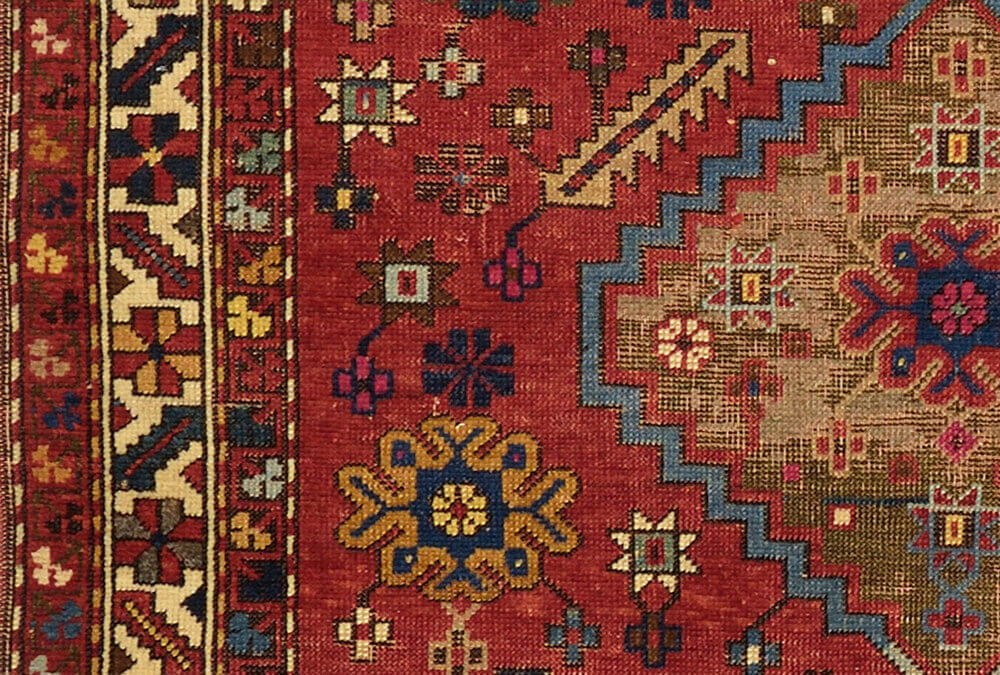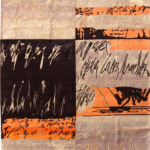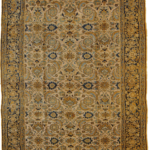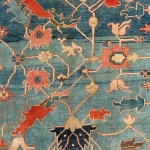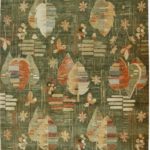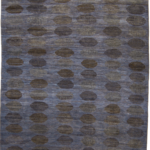Karabagh
Considerazioni sull’opportunità o meno di restaurare questo Karabagh caucasico antico
Inutile parlare della bellezza di questo esemplare in quanto chiunque possegga un minimo di “sentimento ” per quest’arte si accorge immediatamente del fascino che sprigiona. Consideriamo invece il principale aspetto tecnico del tappeto d’epoca (fine XIX secolo): lo stato di conservazione. Il tappeto è integro nella struttura con ancora un bel kilim di testata e possiede ancora originale le riloghe laterali; anche se trama ed ordito non sono compromessi, Il vello, basso in alcuni punti, viene proprio a mancare completamente in altri. Molto facile per me farlo rilanare con materiale d’epoca, ci sono però due motivi che mi trattengono. Il primo è che i punti dove si dovrebbe sostituire il vello sono quelli dove le lane furono tinte usando l’ossido di ferro, lo stato di usura che si è manifestato solamente in questi punti, lo rende agli occhi degli esperti molto più interessante e fascinoso. Il secondo motivo è che se evito di spendere i denari per il restauro posso proporre questo pezzo alla piccola cifra richiesta. lo faccio, non per poterlo vendere più facilmente, sarebbe molto più semplice e redditizio proporlo già restaurato, ma per trascinare in questa passione anche chi, con tanto gusto ma con poche possibilità, inizia oggi ad avvicinarsi a questo campo.
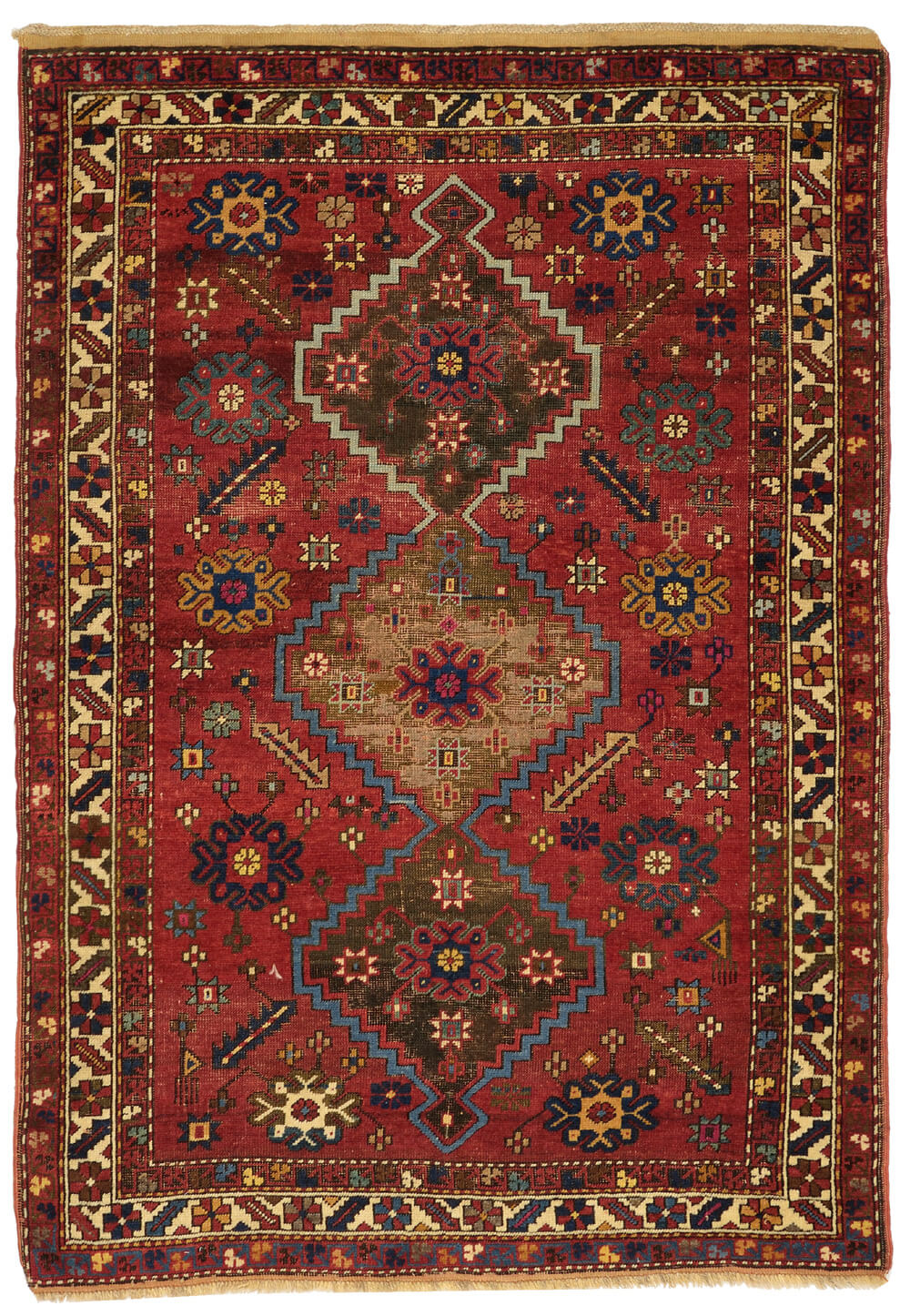
It is useless to talk about the beauty of this specimen as anyone who has a minimum of “feeling” for this art immediately sees the charm it releases. Instead, let’s consider the main technical aspect of the period carpet (late 19th century): the state of conservation. The carpet is intact in the structure with still a nice kilim of the headboard and still has the original side rails; even if weft and warp are not compromised, the fleece, low in some points, is completely lacking in others. Very easy for me to have it relaunched with vintage material, but there are two reasons that hold me back. The first is that the points where the fleece should be replaced are those where the wools were dyed using iron oxide, the state of wear that occurred only in these points, makes it much more interesting and fascinating in the eyes of experts. . The second reason is that if I avoid spending the money for the restoration, I can offer this piece for the small amount requested. I do it, not to be able to sell it more easily, it would be much simpler and more profitable to propose it already restored, but to draw into this passion even those who, with a lot of taste but with few possibilities, begin today to approach this field.
Related posts
Articoli in evidenza
Categorie
- ARTE E MOSTRE
- KILIM
- TAPPETI AFGANI
- TAPPETI AGRA
- TAPPETI ANTICHI
- TAPPETI BHADOHI
- TAPPETI CAUCASICI
- TAPPETI CINESI
- TAPPETI CLASSICI
- TAPPETI DESIGN
- TAPPETI HYDERABAD
- TAPPETI INDIANI
- TAPPETI KAZAK
- TAPPETI MODERNI E CONTEMPORANEI
- TAPPETI PATCHWORK E RELOADED
- TAPPETI PERSIANI
- TAPPETI PESHAWAR
- TAPPETI RIVER E SAMSUNG
- TAPPETI SHIRVAN
- TAPPETI TABRIZ
- TAPPETI TIBET
- TAPPETI TURCHI E ANATOLICI
- TAPPETI TURCOMANNI E TURKMENISTAN
- TAPPETI ZIGLER E ZIEGLER
- UNCATEGORIZED
- VARI

